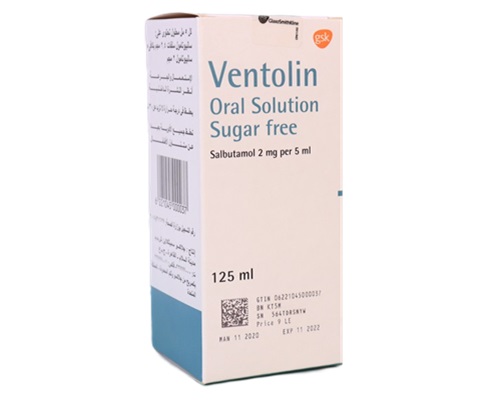Description
Trade name:
Ventolin
Compound:
Each 5 ml of solution contains:
Salbutamol 2 mg.
Auxiliary components:
Sodium citrate, citric acid monohydrate, hydroxypropyl methylcellulose, sodium saccharin, sodium chloride, sodium benzoate, orange flavor, purified water.
Properties:
Beta-adrenergic agonist with a predominant effect on alpha2-adrenergic receptors (located, in particular, in the bronchi, myometrium, blood vessels). Prevents and relieves bronchospasm; reduces resistance in the airways, increases vital capacity of the lungs. Prevents the release of histamine, a slowly reacting substance from mast cells and neutrophil chemotactic factors. Compared with other drugs in this group, it has a less pronounced positive chronotropic and inotropic effect on the myocardium. Causes dilation of the coronary arteries, practically does not reduce blood pressure. Has a tocolytic effect, reducing the tone and contractile activity of the myometrium.
Indications:
Prevention and relief of bronchospasm in all forms of bronchial asthma. Reversible airway obstruction in chronic bronchitis and pulmonary emphysema, broncho-obstructive syndrome in children.
Method of administration and dosage:
Orally as a bronchodilator for adults and children over 12 years of age – 2 mg (5 ml) of solution 3-4 times a day, if necessary, the dose can be increased to 8 mg (20 ml) 4 times a day.
Children aged 6-12 years – 2 mg (5 ml) 3 times a day; Children aged 2-6 years – 1 mg (2.5 ml) 3 times a day.
Contraindications:
Threat of miscarriage in the first and second trimesters of pregnancy, premature placental abruption, bleeding or toxicosis in the third trimester of pregnancy; children under 2 years of age; hypersensitivity to salbutamol.
Precautions:
Use with caution in cases of tachyarrhythmia and other cardiac arrhythmias, arterial hypertension, myocarditis, heart defects, aortic stenosis, diabetes mellitus, thyrotoxicosis, glaucoma, acute heart failure (subject to careful medical supervision).
Increasing the dose or frequency of salbutamol administration should be done under the supervision of a physician. Reducing the interval is possible only in exceptional cases and should be strictly justified.
When using salbutamol, there is a risk of hypokalemia, so during treatment in patients with severe bronchial asthma, the level of potassium in the blood should be monitored. The risk of hypokalemia increases with hypoxia.
Side effects:
From the cardiovascular system: transient dilation of peripheral vessels, moderate tachycardia.
From the central nervous system: headache, dizziness, nausea, vomiting.
From the metabolic side: hypokalemia.
Allergic reactions: in isolated cases – angioedema, allergic reactions in the form of skin rash, urticaria, arterial hypotension, collapse.
Others: hand tremors, internal tremors, tension; rarely – paradoxical bronchospasm, muscle cramps.
Storage method:
Store in a cool, dry place at a temperature not exceeding 30 degrees









